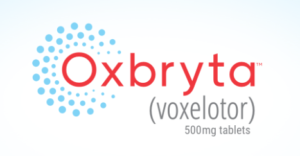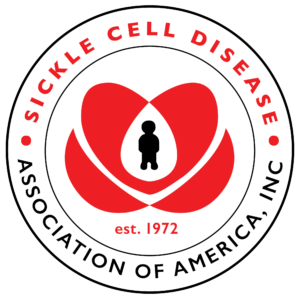FDA Approves Oxbryta™ (Voxelotor), the First Medicine Specifically Targeting the Root Cause of Sickle Cell Disease

Oxbryta (voxelotor), a first sickle cell treatment that works to stop the sickling and destruction of red blood cells that mark this disease, has been given accelerated approval by the U.S. Food and Drug Administration (FDA) for patients ages 12 and older.Specifically, Oxbryta — an oral, once-a-day tablet developed by Global Blood Therapeutics (GBT) — is designed to block sickle hemoglobin polymerization, the root cause of sickle cell disease. Mutant hemoglobin polymerization refers to the clumping and sticking together of molecules into rigid, long rods (polymers) that deform blood cells, and can block small blood vessels. The resulting poor blood flow affects the oxygenation of tissues, ultimately leading to painful vaso-occlusive crises.By increasing hemoglobin’s affinity to oxygen, Oxbryta halts this process. Accelerated approval is given to medicines filling a serious and unmet need, provided they meet a surrogate trial goal. In the case of Oxbryta, this endpoint was data from the high-dose group in GBT’s pivotal Phase 3 trial. Confirmatory, post-approval safety and efficacy studies will be necessary for it to remain in widespread use, the FDA says in its label.The FDA announcement came more than three months in advance of the agency’s expected decision date of Feb. 26, 2020.
“Today is a major milestone. … When we started our journey with the SCD community more than eight years ago, we set out to transform the way this devastating, lifelong disease is treated,” Ted Love, MD, president and CEO of GBT, said in a press release. “We are proud to bring this breakthrough therapy to the SCD community” and grateful to all who “have worked alongside us to develop this first-in-class therapy.”
“Every person with SCD experiences hemoglobin polymerization and suffers from varying severity of anemia and hemolysis,” said Elliott Vichinsky, M.D., director of hematology/oncology at UCSF Benioff Children’s Hospital in Oakland, California. “With today’s approval of Oxbryta, we now have a therapy that significantly improves hemoglobin levels, has a favorable safety profile and reduces the anemia and hemolysis that inevitably leads to the long-term and often undetected detrimental effects associated with this chronic genetic condition.”
GBT said it expects to begin marketing Oxbryta, as 500 mg tablets, to patients in the U.S. through its “specialty pharmacy partner network” within two weeks. The treatment reportedly will cost $10,417 per month, or around $125,000 per year.
The FDA based its decision on high-dose data from the randomized, global Phase 3 HOPE trial (NCT03036813). The trial assessed the safety and efficacy of 24 weeks of treatment with Oxbryta in 274 people with SCD, ages 12 to 65, compared with a placebo.
Trial findings, published in The New England Journal of Medicine, showed that Oxbryta raised hemoglobin levels in 51% of the 90 patients treated with Oxbryta at 1500 mg daily — its now approved dose — compared with 6.5% of those on placebo.
Specifically, hemoglobin levels rose over the 24 weeks to a mean of 9.8 g/dL in the patients given Oxbryta at that high dose, and to 8.9 g/dl in 92 patients treated with the 900 mg daily study dose.
At high dose, Oxbryta’s use also lowered levels of two established biomarkers of red blood cell damage: reticulocytes (by 19.9%) and bilirubin (by 29.1%).
Benefits were seen regardless of concurrent use of hydroxyurea, a standard treatment to reduce the frequency of pain crises and the need for blood transfusions.
The therapy also was seen to be safe and well-tolerated by patients, with similar adverse events reported in both treated and untreated groups. The most common side effects reported in Oxbryta and placebo patients were headache (26% vs. 22%), diarrhea (20% vs. 10%), abdominal pain (19% vs. 13%), nausea (17% vs. 10%), fatigue (14% vs. 10%), rash (14% vs. 10%) and pyrexia or fever (12% vs. 7%).
“Oxbryta is an inhibitor of deoxygenated sickle hemoglobin polymerization, which is the central abnormality in sickle cell disease,” Richard Pazdur, MD, director of the FDA’s Oncology Center of Excellence, said in an agency release. “With Oxbryta, sickle cells are less likely to bind together and form the sickle shape, which can cause low hemoglobin levels due to red blood cell destruction. This therapy provides a new treatment option for patients with this serious and life-threatening condition.”



